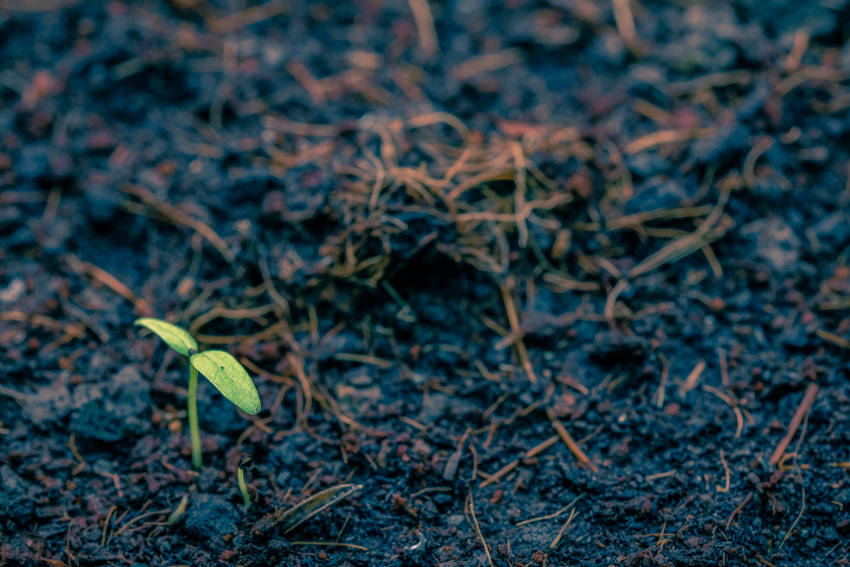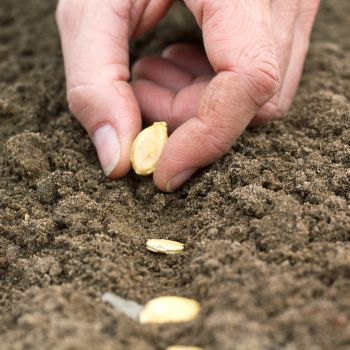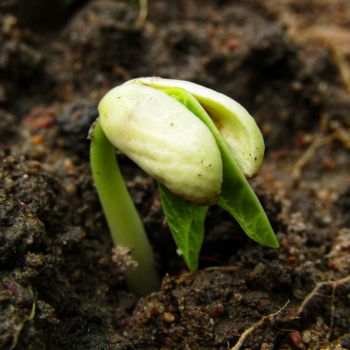As any gardener faced with a dandelion-strewn lawn will know, some seeds need absolutely no encouragement to burst into life. Unfortunately, things don't always go so smoothly when it comes to germinating the seeds you really want to grow.
Some plants such as parsley are naturally slow to germinate, while the viability of other species can decrease rapidly with seed age. However, one of the most common reasons for slow and unreliable germination is simply down to the natural cycles of nature.
Most plants outside of the tropics grow according to the seasons. Many perennials, trees, and shrubs produce seeds which need to survive a winter before germinating. They do this by entering a dormant state, sitting out the cold until warmer conditions arrive in spring, and without this cold period germination will usually fail.
While nature relies on strength in numbers to make sure new generations of plants are produced from dormant seed, this isn't necessarily an ideal option for a home gardener short on space in the seed nursery.
However, there are several ways of encouraging dormant seeds to germinate more reliably, and one of the most common is known as cold stratification.
What is Cold Stratification?
Cold stratification is a method of pre-treating seeds to overcome winter dormancy more quickly and reliably than leaving them to their own devices. In essence, it's the process of simulating a cold, damp winter to spur the seeds into action on a timetable that better suits a gardener's plans.
Not all plants need this treatment. But if a species has developed in an area with cold winters, and also produces thick-shelled seeds to withstand the season, then stratification is often useful.
This is particularly true for longer-living perennials and trees, compared to vigorous annuals and biennials which often take a more opportunistic approach to germination.
How is Cold Stratification Done?
There are two main methods of cold stratification.
The first is to let nature do the work by planting seeds out in the cool conditions of autumn, and waiting until spring for germination. This over-wintering technique will be familiar to growers of broad beans, garlic, and several other common garden crops.
While this is a straightforward and natural method, it's also a little haphazard. In warmer winters, the seeds could rot before the days lengthen enough to spur germination. On the other hand, an unusually cold winter could kill the seeds off through excessive freezing. And of course, there's always the risk of various pests making a meal of the dormant seeds and weeds over running your sowings.
Because of these difficulties, many gardeners prefer taking a more proactive approach to stratifying seeds, using a refrigerator to mimic winter conditions. Here's how it's done.
- Soak your seeds overnight to start softening their protective shells.
- Add the seeds to a clean, sealable plastic bag along with moistened peat, compost, or vermiculite. Make sure the contents are well moistened but not dripping wet.
- Optionally, add a fungicide powder to help prevent mildew.
- Seal the bag and place it in your fridge for between ten days and a couple of months, depending on the seed variety. The salad drawer is an ideal spot - you're looking for cool, dark conditions rather than extreme chilling.
From this point on, it's a matter of waiting. Check the seeds regularly for signs of germination, and remove any which show signs of mildew or rotting.
In a perfect world, you'd time germination to coincide with warmer weather so that you can plant the seedlings out, but this can be a lottery. Research the estimated stratification time for your seeds before starting, but accept that the process will go at its own pace.
Tips for Successful Stratification
For the best chances of stratification success, there are a few points to bear in mind.
- Stratification isn't an exact science. The aim is to give nature a helping hand rather than force the issue. Patience is a virtue.
- It's common for some seeds to refuse to germinate. If this happens, save them for the next year - you may just have a few particularly stubborn seeds. Take a leaf from nature's book and stratify a few more seeds than you think you'll need.
- Only use stratification on seeds which need it. Most highly domesticated plant species have had the dormancy bred out of them, or at least greatly reduced. Stratifying these seeds can bring germination too far forward, causing problems if it's still too cold to plant them out.
- Stratify different species of seeds separately, and don't forget to label them, including the date you began the process. After a year or two's experience, you'll be able to predict germination times fairly accurately.
- Careful attention to hygiene is essential to prevent rotting. Always use clean bags along with fresh compost or vermiculite.
- Once potted on after germination, keep the seedlings in warm, dry conditions as far as possible. Planting out into cold, damp soil at this tender stage is risky, and will set healthy growth back.
Successful gardening often involves providing the right conditions to let nature take its course. However, sometimes a firmer guiding hand is needed. Cold stratification will encourage reluctant seeds to germinate at a time that better suits you, and reduces the frustration of stubborn seeds holding on to their dormant state.






